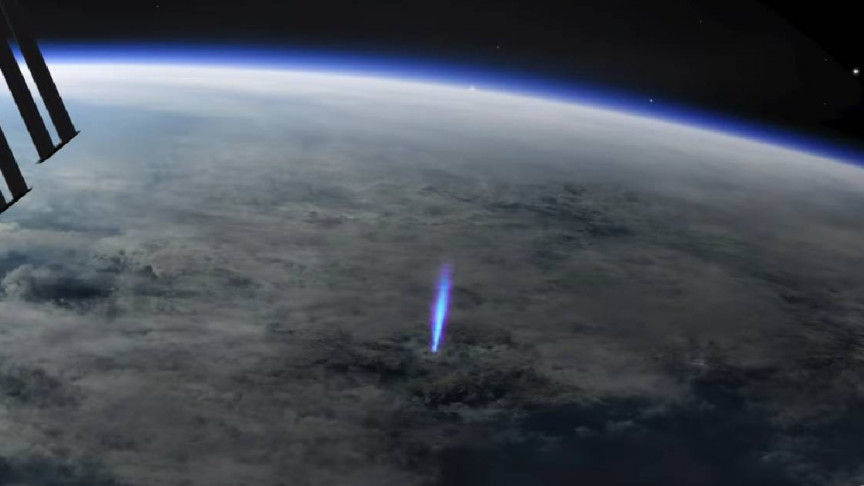
ISS Tool Spots Blue Light Jets Shooting Upwards From Thunderclouds
Do you ever wonder about the many experiments that go on at the International Space Station (ISS)? What do astronauts study in this orbiting laboratory?RELATED: ASTRONOMERS CREATE 'FIFTH STATE OF MATTER' IN THE INTERNATIONAL SPACE STATIONWell, many things of course but one of them is the weather: particularly the kind of weather events that can not be seen from Earth. These are called blue jets, and elves (short for Emissions of Light and Very Low Frequency Perturbations due to Electromagnetic Pulse Sources), and their monitoring is made possible by a European tool named the Atmosphere-Space Interactions Monitor (ASIM) observatory.ASIM, installed in the space station in 2018, consists of a collection of optical cameras, photometers, and an X and gamma-ray detector and it's there to detect electrical discharges from weather events that can only be spotted in space. Understanding these galactical weather events is crucial to understanding not only the weather on Earth but also the concentration of greenhouse gasses in Earth’s atmosphere.But what are blue jets and elves? Blue jets, as their name denotes, are streams of blue-colored lightning that do not head toward land but instead shoot upward into space. As the images show, they are quite beautiful to see.Elves, on the other hand, are light emissions that appear as rapidly expanding rings in the ionosphere. Both elves and blue jets were spotted by ASIM on Feb. 26, 2019 near Nauru, a small island in the central Pacific Ocean. They have now been described in a paper published in Nature on Jan. 20, 2021. The study describes these events in great detail capturing their awe-inspiring beauty even without the use of images. It is definitely worth a read if you are a fan of space phenomena. It is also indicative of all we still have to discover on our precious planet."This paper is an impressive highlight of the many new phenomena ASIM is observing above thunderstorms and shows that we still have so much to discover and learn about our Universe," said in a statement Astrid Orr, ESA's Physical Sciences Coordinator for human and robotic spaceflight.
……Read full article on Interesting Engineering
Space
Comments
Leave a comment in Nestia App